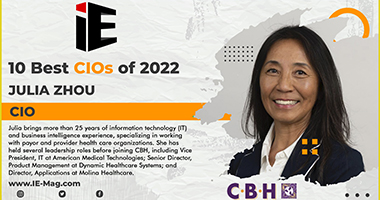Digital Transformation, a business necessity

Jaures maglorie N.ambe,
Entrepreneur, Tech Enthusiast, MM/SD Senior
Consultant, FICO consultant.
What is Digital Transformation
Digital tools and technology are changing how people interact, and in turn these changes how people do business. All around us technology is quickly changing how we live work and play. Digital transformation refers to how a company has or is transforming its core business processes using digital technology in order to gain competitive advantage and gain differentiation in its market segment.
It refers to the streamlining of business process through digital computer applications and hardware to achieve collaboration and interaction between its partners as well as provide greater customer value.
Technological evolutions and technologies, ranging from the cloud, Big Data, analytics, artificial intelligence and mobile/mobility (a key game changer) to the IoT and more recent emerging technological realities are 1) enablers of digital transformation and/or, 2) causes of digital transformation needs (among others as they impact behavior of consumers or reshape entire industries, as in the digital transformation of manufacturing, and/or 3) accelerators of innovation and transformation. Yet, technology is only part of the equation as digital transformation is by definition holistic.
The enterprise is under pressure these days to implement a digital transformationstrategy, and in all likelihood the executive suite is calling for dramatically faster change than what IT considers prudent. But with services like Uber and Airbnb showing how easy it is to tip over entire industries with little more than a cell phone app, the need to shift infrastructure, processes and even core business models to a digital services footing is urgent to say the least.
Digital transformation is on the radar of many organizations. In order to reap similar benefits, it’s important to focus on real business and customer challenges, have a clear – often staged – approach, prioritize and involve all stakeholders in any digital transformation process.
While digital transformation is predominantly used in a business context, it also impacts other organizations such as governments, public sector agencies and organizations which are involved in tackling societal challenges such as pollution and aging populations by leveraging one or more of these existing and emerging technologies. In the scope of this digital transformation overview, we mainly look at the business dimension.
Digital disruption
On top of being one of the most hyped terms of the last few years (as is digital transformation as such), digital disruption is mainly used in the sense that an industry, way of doing business or ecosystem (e.g. societal) is significantly challenged by existing (mostly tech) companies, newcomers or incumbents who have mastered digital business skillsets and came up with solutions, business models and approaches that cause a significant shift in customer behavior and market context, requiring existing players (which can include ‘digital businesses’) to change their strategies as well.
However, disruption is certainly not only about those initiatives by newcomers or incumbents with disruptive approaches. Disruption in the end is about people, customers.If you ask us what the biggest disruptive technologies will be next it’s the Internet of Things, along with cognitive/AI, Big Data and systems of intelligence.
Digital Business transformation arears
• Business activities/functions: marketing, operations, human resources, administration, customer service, etc.
• Business processes: one or more connected operations, activities and sets to achieve a specific business goal, whereby business process management, business process optimization and business process automation come into the picture. Business process optimization is essential in digital transformation strategies and in some industries and cases is essentially customer-facing today, whereas in others internal goals come first in initial stages.
• Business models: how businesses function, from the go-to-market approach and value proposition to the ways it seeks to make money and effectively transforms its core business, tapping into novel revenue sources and approaches, sometimes even dropping the traditional core business after a while.
• Business ecosystems: the networks of partners and stakeholders, as well as contextual factors affecting the business such as regulatory or economic priorities and evolutions. New ecosystems are built between companies with various background upon the fabric of digital transformation, information, whereby data and actionable intelligence become innovation assets.
• Business asset management: whereby the focus lies on traditional assets but, increasingly, on less ‘tangible’ assets such as information and customers (enhancing customer experience is a leading goal of many digital transformation “projects” and information is the lifeblood of business, technological evolutions and of any human relationship). Both customers and information need to be treated as real assets in all perspectives.
• Organizational culture, whereby there is a clear customer-centric, agile and hyper-aware goal which is achieved by acquiring core competencies across the board in areas such as digital maturity, leadership, knowledge worker silos and so forth.
• Ecosystem and partnership models, with among others a rise of co-operative, collaborative, co-creating and, last but not least, entirely new business ecosystem approaches, leading to new business models and revenue sources.
• Customer, worker and partner approaches. Digital transformation puts people and strategy before technology. The changing behavior, expectations and needs of any stakeholder are crucial. This is expressed in many change subprojects whereby customer-centricity, user experience, worker empowerment, new workplace models, changing channel partner dynamics etc. (can) all come in the picture. It’s important to note that digital technologies never are the sole answer to tackle any of these human aspects, from worker satisfaction to customer experience enhancement. People involve, respect and empower other people in the first place, technology is an additional enabler and part of the equation of choice and fundamental needs.
Digital transformation framework
There will soon be over a billion smartphones, impacting all aspects of organizations’ value chains, commerce, and customer and supplier engagement processes. This transformation will result in an explosion in digital data and more importantly, usable insight. And the smartphone isn’t the only digital technology driving business transformation. Other technologies like sensors, beacons, scanners, RFID (radio frequency identification), NFC (near field communications), GPS (global positioning systems), Bluetooth, web clicks, social media postings, digital newsfeeds, smart watches, fitness bands, video surveillance, drones, robotics, etc. are all contributing to the digitalization of our physical world.
However, in spite of all the advances in virtual and augmented reality, the physical world is not going away. We will still need to live in homes, wear clothes, eat food, wash dishes, paint bathrooms, ride in vehicles, fly in airplanes, go to movies and malls, exercise, sleep, etc. And companies are still going to manufacture products and provide services to support the wide variety of physical needs. Companies are still going to need a value creation process (or value chain), which are the activities an organization performs to add value to a product or service, including design, procurement, production, logistics, marketing, sales and service.
Digitalization transformation will not replace the physical world; it will augment it. Likewise, digital transformation will not replace an organization’s value creation processes; it will augment it! Digital transformation extends and expands the opportunities for organizations to create additional and new customer, product and market value.
So the key question for organizations contemplating this digital transformation is where and how can the organization exploit these digital technologies in a way that augments or expands their business models; that is, where and how do organizations apply digital technologies and the resulting data to optimize key business processes, uncover new monetization opportunities and create a more compelling customer experience?
Subscribe to IE-Mag
News
This Apple Watch Case Could Kill All of Those Wannabe AI Devices
Google defends AI search results after they told us to put glue on pizza
Google scales back AI search answers after it told users to eat glue
FAA won't approve increased 737 Max production in near future
Thursday was a sour day for the US economy — with an important silver lining
OPEC+ working on complex production cut deal for 2024-2025, sources say
Stock futures inch lower as investors review earnings, brace for inflation report: Live updates
Salesforce Shares Plunge by Most Since 2008 After Weak Outlook
Jeep’s Wagoneer S Trailhawk concept teases a fully electric off-roader
Gap’s stock jumps 23% as the retailer swings to profit and raises guidance
Medline recalls 1.5 million bed rails linked to deaths of 2 women
Oil falls as Fed policymakers look to maintain rate cuts, gasoline stocks rise










